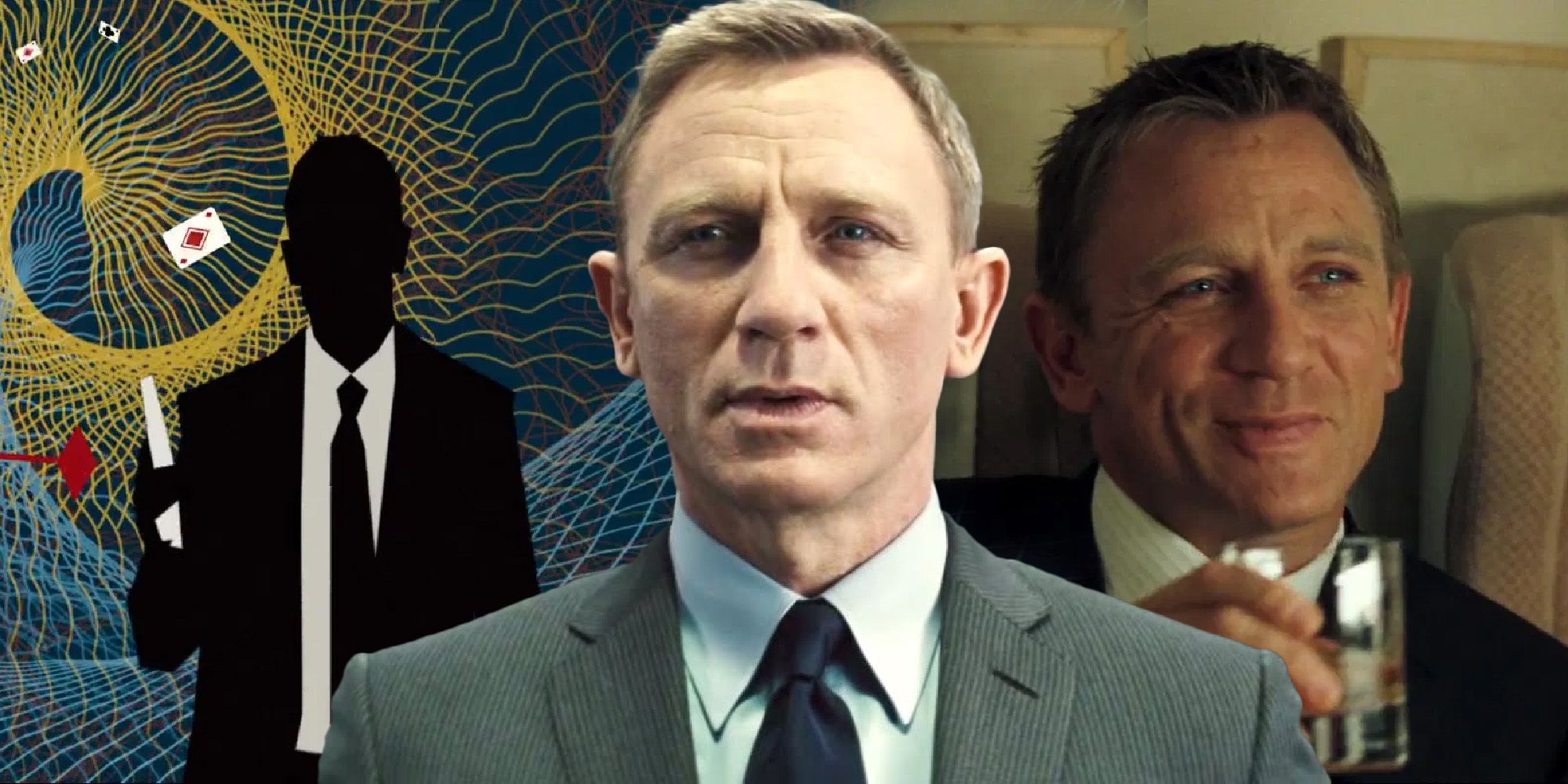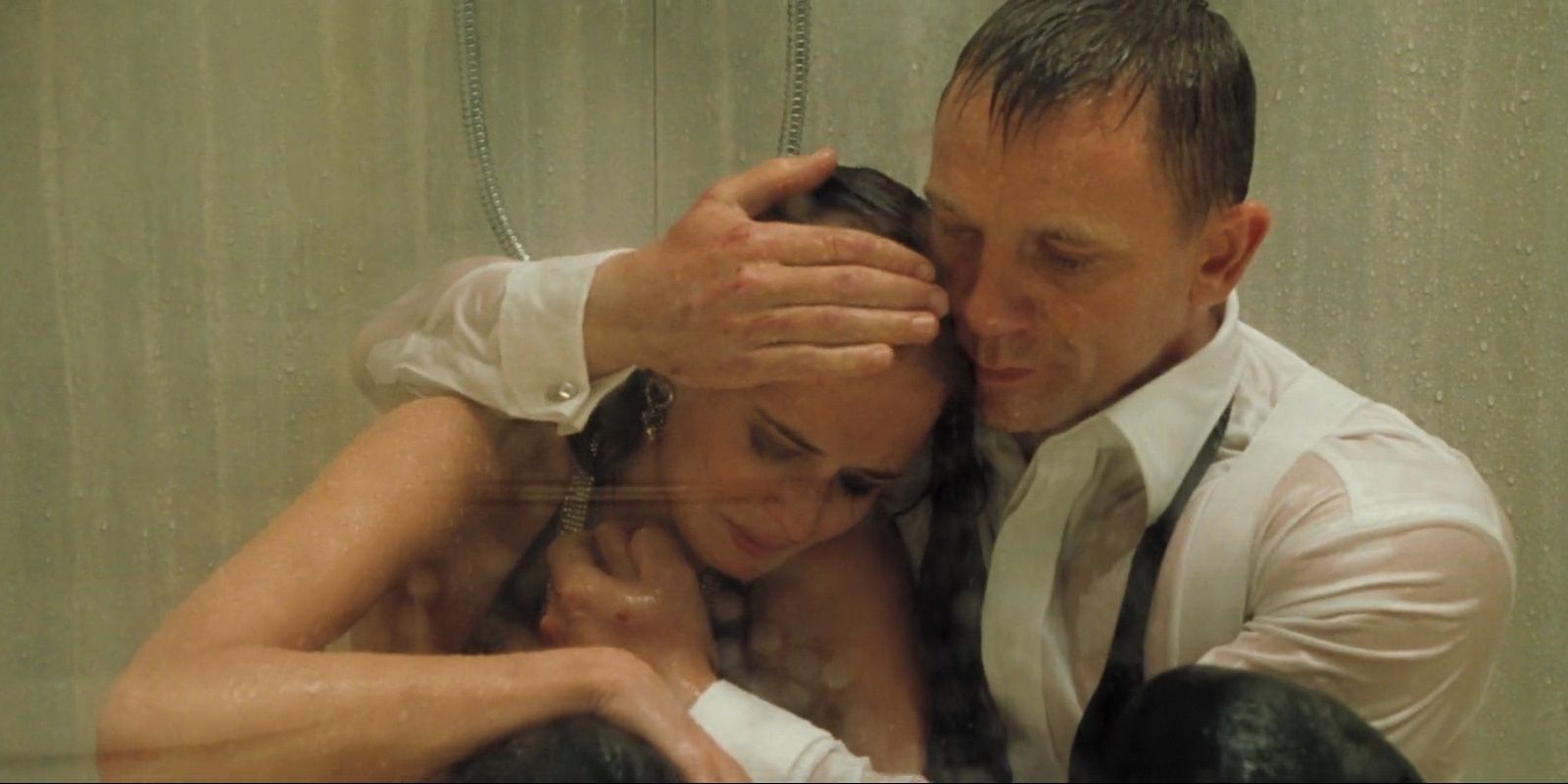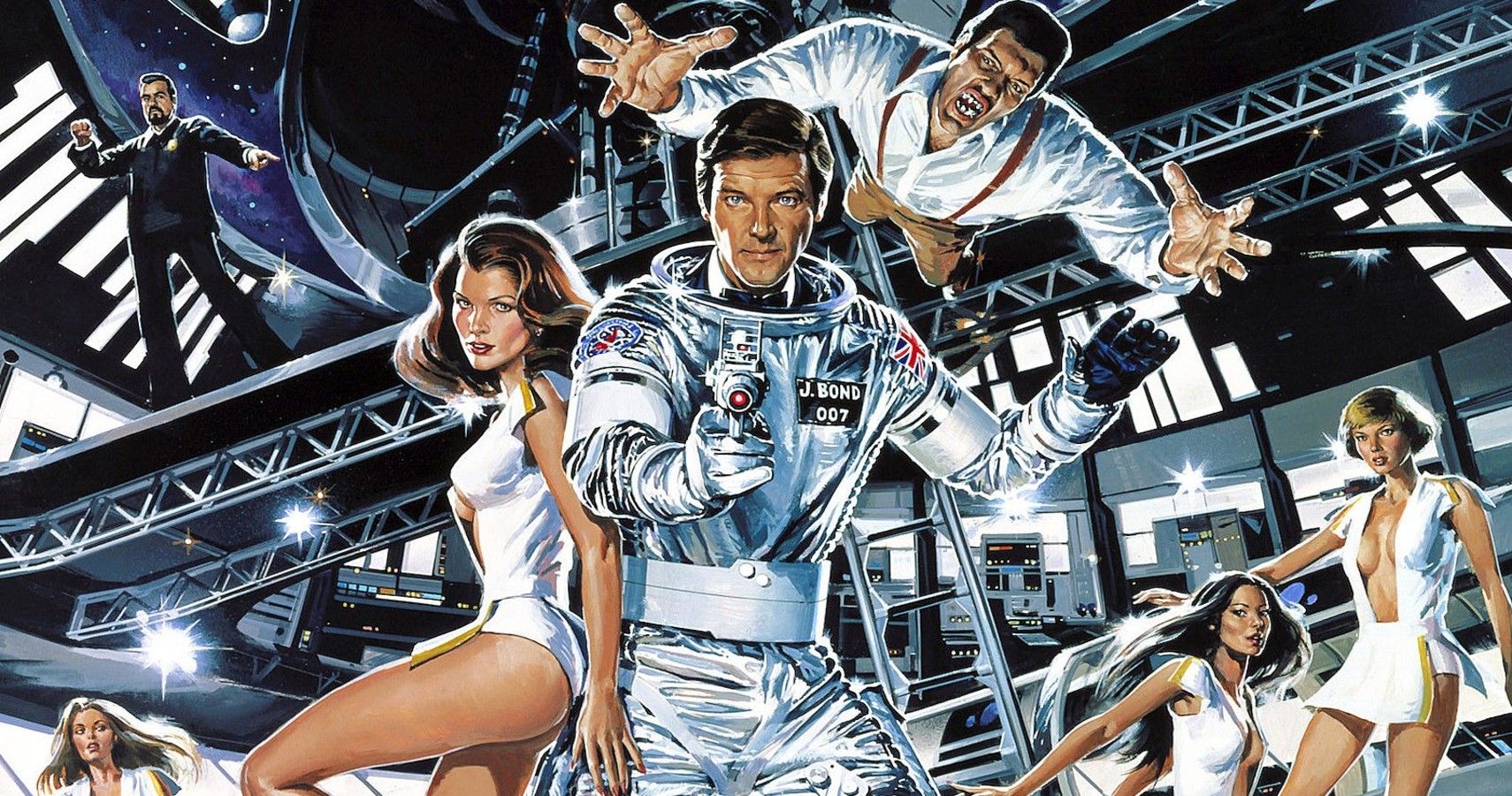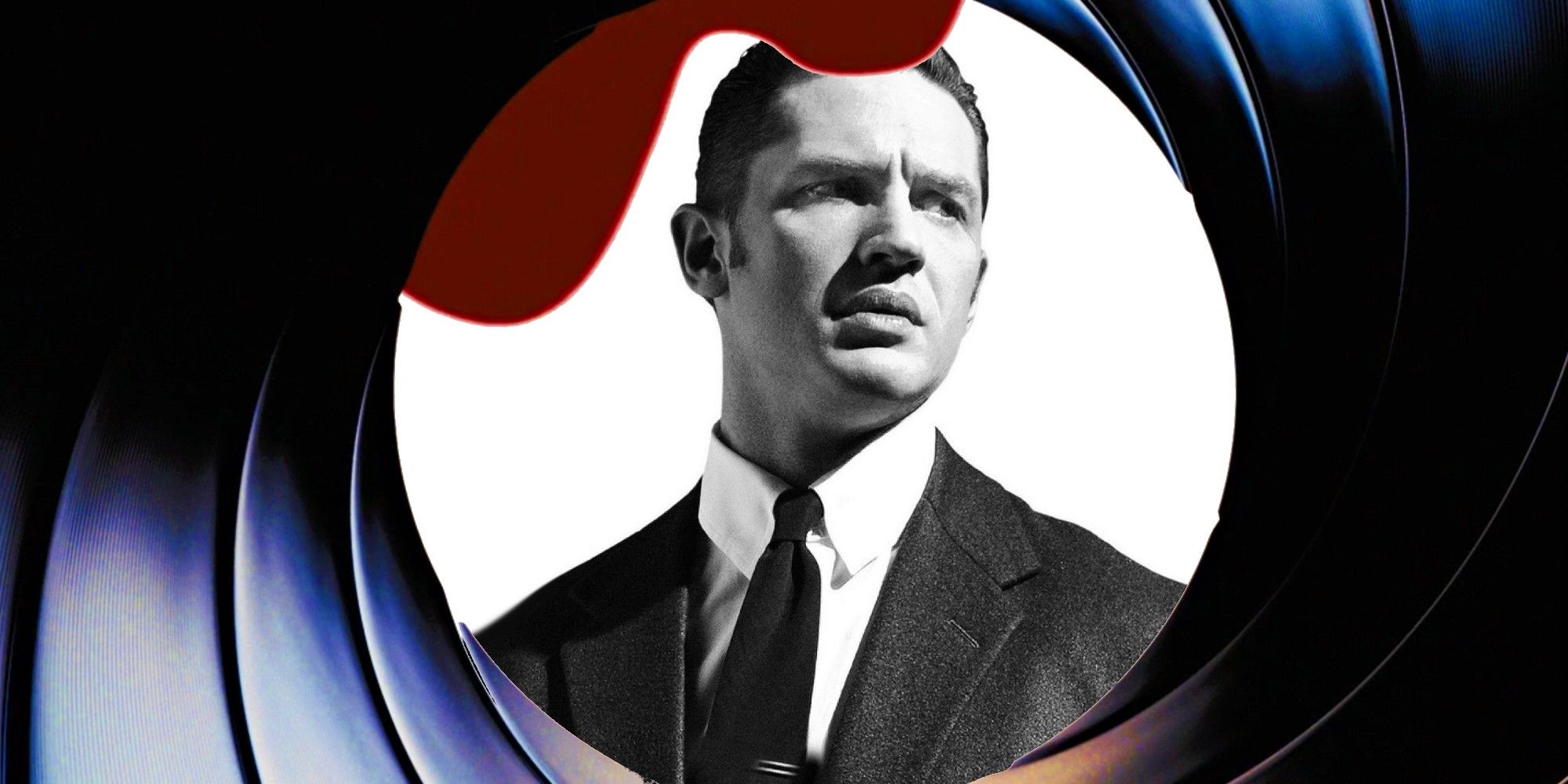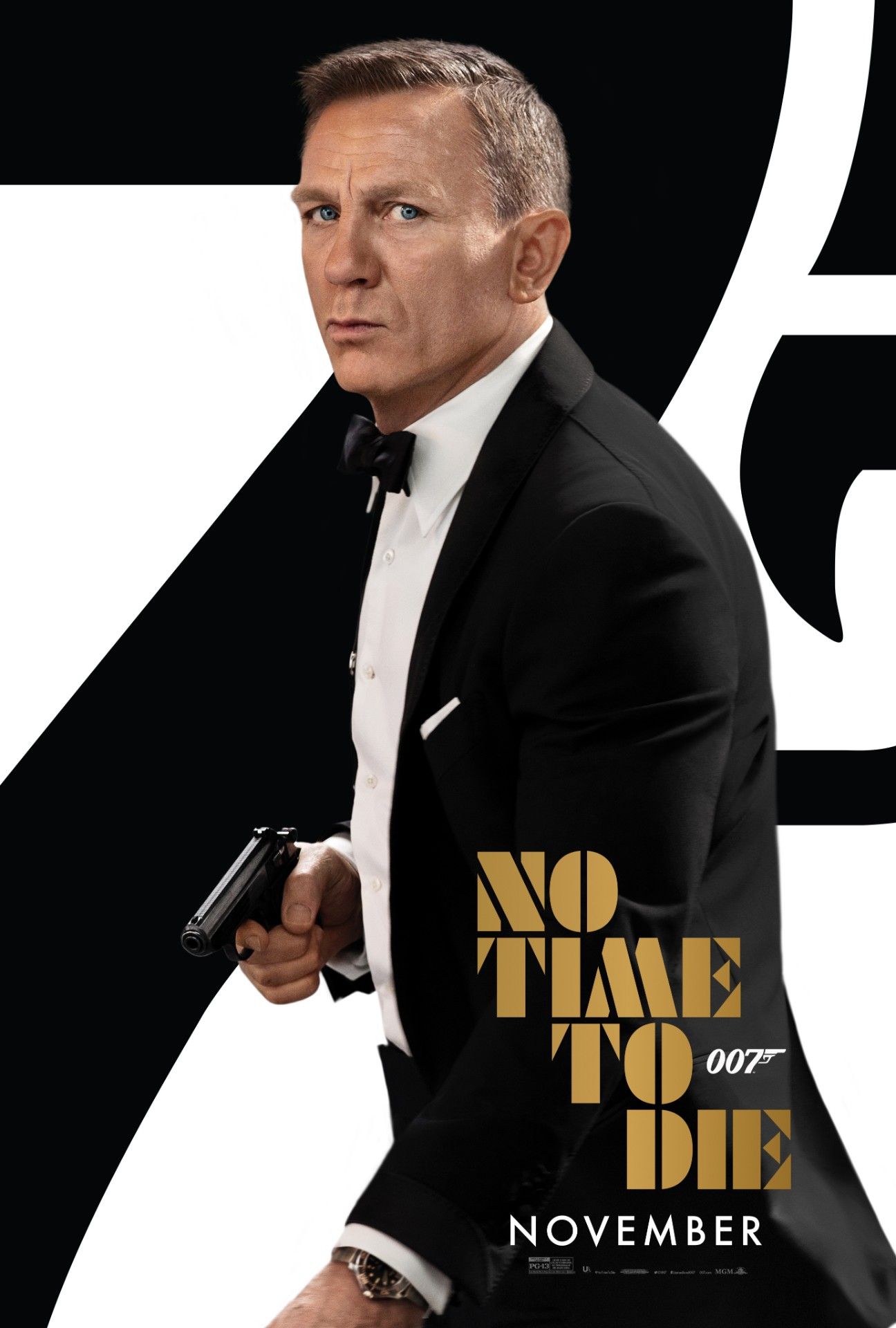James Bond needs to be fun again when Daniel Craig leaves the spy franchise behind. 007's 25th outing No Time to Die is finally hitting cinemas in 2021, but when Daniel Craig is replaced in the role of the super-spy the series needs to return to the tone of its sillier, more fun earlier years. With No Time to Die, Daniel Craig’s time as James Bond is coming to an end. Currently, Mad Max star Tom Hardy (a perfect fit for Bond, despite his age) is rumored to be replacing the actor in the role.
Fresh from the gritty crime thriller Layer Cake when he was cast, Craig’s taciturn Bond was an effective reinvention of the character for a post-Bourne world. A darker and less quip-happy Bond, Craig was a shaky and grounded secret agent perpetually getting realistic injuries on the job and always nearing retirement. But blockbusters have lightened up since the post-9/11 days of 2006 and to succeed, the next Bond needs to return to the franchise’s goofier tone.
When Daniel Craig’s edgier Bond debuted, he arrived in cineplexes where gritty realism was the order of the day even in big-budget blockbuster cinema. Conflicted antiheroes like Matt Damon’s Jason Bourne and Christian Bale’s tortured Dark Knight-era Batman had put the self-aware campiness of the nineties behind them and ushered in a more stoic, realistic era of action heroes, one which lasted until the next decade. However, the arrival of the MCU and particularly the massive success of The Avengers meant that by 2012, audiences were falling back in love with charming, occasionally goofy heroes who didn’t let their dark pasts get in the way of smart-ass dialogue and faced off against villains whose campiness didn’t make them any less threatening. Heath Ledger’s unnervingly realistic Joker was out and Tom Hiddleson’s theatrical Loki was in, but Bond remained more grounded and darker as Craig’s tenure in the role continued. Now with the character changing actors, it's the right time for Bond to lighten up.
Craig’s Bond Was Darker Than Ever
The Daniel Craig version of James Bond was not only a PTSD-afflicted, relatively realistic depiction of the spy compared to Sean Connery's original 007, he was also surrounded by a new staff who were affected (and in the case of Judi Dench’s M, killed) by his work. Where the James Bond series used to have little continuity between films, typically returning to the status quo sitcom-style, Craig’s version of the character took the continuity-acknowledging self-serious Bond of Timothy Dalton’s era and cranked the darkness up to eleven. Where Dalton’s more grounded Bond lost a love interest to provide him a dark backstory for his second film, Craig’s Bond is so dark and gloomy that even perky secretary Miss Moneypenny got a brutal backstory wherein she accidentally almost killed Bond in the line of duty.
It would be almost impossible for the James Bond series to delve into even darker territory than Craig's Casino Royale 007 origin story did without also losing the essential levity, humor, and goofiness that makes 007’s franchise so appealing, so the opposite approach would be the best way to reinvent the series for a new Bond. Pierce Brosnan’s debut in the role saw the James Bond franchise lighten its tone significantly after the heavier Dalton outings and win over critics in the process, as a more suave and less psychologically damaged Bond doesn’t necessarily have to mean a less impactful version of the character or a less dramatic film.
Bond’s Best Outings Are Over-the-Top
Many of the super-spy’s best-remembered adventures are pretty cartoony and unrealistic, whether it is the exploding villain of Live & Let Die, Moonraker’s space-based Star-Wars-inspired plot, or Blofeld’s Dr. Evil/ Hank Scorpio-inspiring turn in Diamonds Are Forever. The James Bond series is beloved for, not despite, its occasional absurdity, and without elements like hollowed-out mountain lairs and zany schemes to engineer artificial earthquakes, there’s not a lot separating Bond from his less over-the-top spy thriller competitors. Despite how pivotal the zany elements of Bond are to the appeal of the series, however, they never fully gelled well with the stone-faced tone of Craig’s Bond. One criticism of the upcoming No Time to Die for example is that the primary villain, Rami Malek’s anarchist Safin, could be too realistic for fans of the franchise to find his scheme exciting or incredulous.
Fortunately, Craig’s Bond movies are mostly fast-paced enough to paper over the issue of their too-believable tone, but it becomes obvious on a re-watch that the actor’s outings are split between the goofier elements of earlier Bond films and the more grounded style of modern spy movies. Darker outings like Quantum of Solace bored audiences as they lacked any campy appeal or fun elements. But in contrast, the more cartoony elements of Craig’s films, such as Javier Bardem’s hammy Skyfall villain, jarred with the otherwise (comparatively) realistic tone of the rest of the movie. A return to the series’ sillier origins could make for more fun, light-hearted Bond outing that isn’t in conflict with its sense of fun, particularly when the success of the blockbuster Kingsman franchise proves there is a public appetite for a less self-serious British super-spy.
A New Tone Would Make A New Bond Stand Out
More than anything, the next Bond needs a new, fresh tone because Craig’s Bond will be a hard act to follow. As serious as his iteration of the character is and as dark as his movies are, he’s also rightfully beloved as a suave iteration of the character with a few punchy, intense installments to his name. Spectre and Skyfall were well-reviewed and expectations are high for No Time To Die, whose twins villains Safin and Blofeld and star-studded supporting cast including Ana De Armas and Lashana Lynch ensure this will be an ambitious (if potentially overstuffed) final outing for the character.
Instead of trying to one-up the appeal of Craig’s Bond by trying to make an even darker, more realistic Bond, the series could benefit from a lighter touch. Much like Brosnan’s Bond brought back the goofier elements of the series to follow Timothy Dalton’s critically acclaimed realistic version of the character who, in turn, was written as a response to his predecessor Roger Moore’s uber-camp later films, the James Bond movies have always needed to move between light and dark extremes when it comes to tone. Brosnan’s final outing Die Another Day was almost too cartoony to fit the franchise, resulting in the relative realism of Casino Royale. As such, this tradition needs to be kept alive by the next film allowing the series to reincorporate some more over-the-top elements to stay true to the escapist appeal of James Bond as an iconic character.

